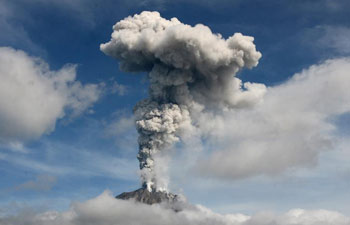GENEVA, Nov. 21 (Xinhua) -- Lakes and freshwater systems account for more than 20 percent of all methane emissions into the atmosphere, scientists at the University of Geneva have found, Swiss media reported Tuesday.
Until recently, it had been thought that methane could only be produced in oxygen-deprived environments, such as the sedimentary layers found at the bottom of lakes.
The phenomenon is still largely unknown and has been underscored by a two-year field study designed to measure the methane concentration and production in the surface water (the top five meters) of Lake Hallwil in the northern Swiss canton of Aargau.
"Something is going on in the surface waters and nobody has been paying attention so far," Daniel McGinnis, co-author of the study with his colleague Daphne Donis said, Swiss New Agency ATS reported.
Methane is a gas whose greenhouse effect is 28 times greater than that of carbon dioxide and measuring the gas is important in examining phenomena such as climate change.
Flatulence in cows is a big producer of methane and Lake Hallwil, with an area of about 10 sq km, generates as much methane a year as a herd of 240 bovines, or about 25 tons.
Till now scientists have not been able to explain the methane production in the surface waters of lakes. Scientists say it is therefore possible that lakes could be enormous producers of methane, much larger producers, in fact, than previously estimated.
The Geneva University research is published in Nature Communication and shows that lakes play a critical role in the methane gas cycle.
The measurement campaign was conducted over the summers of 2015 and 2016 in Lake Hallwil and reached an unexpected conclusion: the mechanical accumulation of methane in the lake surface cannot explain the concentrations that the scientists observed.
The concentration should be much lower, and the rates observed can only be explained by the gas being produced in the surface layer, said the scientists.
"It could be the by-product of another, yet unknown process," McGinnis said.

















